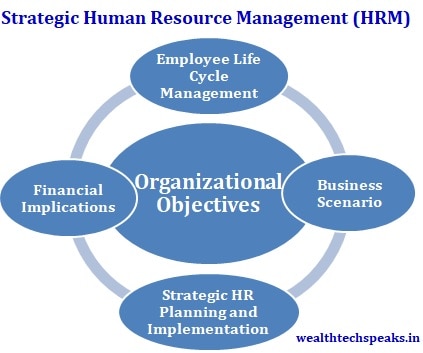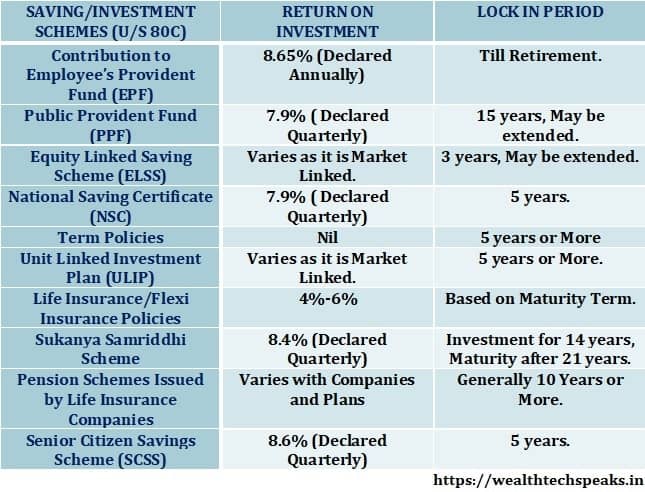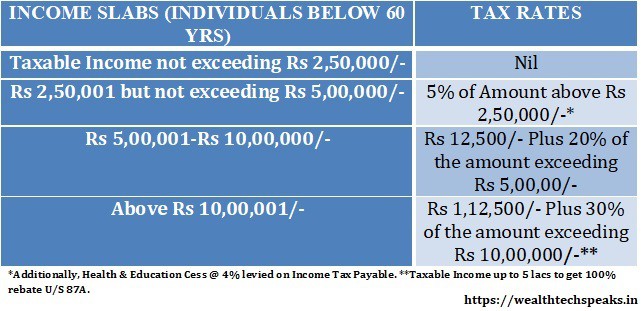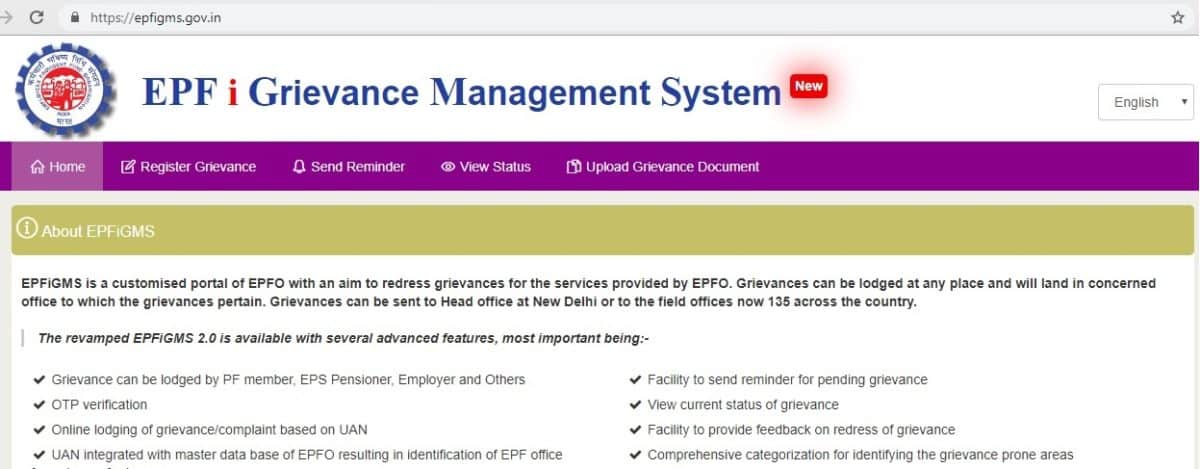
National Pension Scheme (NPS): Retirement Plan
- Posted By Amritesh
- On August 8th, 2021
- Comments: 7 responses
National Pension Scheme (NPS) is introduced by the Government to provide better Social Security to the Individuals post retirement and help them lead a comfortable life. The National Pension Scheme (NPS) was launched on 1st January, 2004 and was made mandatory for all Central Government Employees. Since 2009, scheme has been opened for all the citizens aged between 18 years to 70 years. NPS is professionally managed retirement benefit product. Now even the State Governments and Corporate entities have also subscribed to the scheme for the benefit of their respective employees.
Income Tax Slabs & Rates for Financial Year 2021-22
Pension Fund Regulatory and Development Authority (PFRDA) was formed in 2003 by the Government of India to manage and regulate the Funds under the Scheme. The professional fund managers manage the pool of funds and diversify the subscriber’s contribution into equities, government bond and other low risk debt & fixed return instruments. The diversification of the contribution not only mitigates the risk but also ensures optimum utilization of assets for wealth creation. Atal Pension Yojana (APY) is also managed by PFRDA.
Types of Account under National Pension Scheme (NPS)
The National Pension Fund (NPS) offers two types of account to the subscribers, namely Tier 1 and Tier II.
Tier I is mandatory account for the all the subscribers of the NPS. It is the primary retirement-benefit account in which the deposit is made and tax deduction may also be claimed on the such contributions.
Tier II is only available if the Individual is already contributing in the Tier I Scheme and offers more flexibility in terms of withdrawals but does not provide any additional benefit apart from returns on contribution. This account may be treated as savings account with the chance of earning higher returns on deposits. However, Central Government Employees may claim tax deduction under section 80C on contribution to the Tier-II account, subject to lock-in period of 3 years.
The minimum contribution under the NPS-Citizen Model is Rs 1000/- every Financial Year. Under Central Government- NPS model, Government and Employee contribute 14% & 10% of the salary (Basic plus Dearness Allowance) respectively, towards NPS Fund. Similarly, State Government and Corporate entities may also register under NPS to extend benefits to their respective employees. However, the contribution rate may vary for such institutions.
Classification of Assets for Investment under NPS
National Pension Scheme has got four “Asset Class” for Investment:
E Class: Investment into Equities. (Maximum up to 75% of contribution can be invested)
G Class: Investment into Government Securities. (Quantum of Investment Depending on Choice of Investor)
C Class: Investment in Fixed Return Securities. (Quantum of Investment Depending on Choice of Investor)
A Class: Investment in Mortgaged Securities and Infrastructure Units including Real Estate Investment Trusts approved by Securities Exchange Board of India (SEBI). (Maximum Investment capped at 5%.)
NPS allows Private Sector Subscribers to allocate their contribution in the 4-asset class based on their choice or one may opt for Life Cycle Funds for auto asset allocation. Under Life Cycle Fund, contribution is automatically allocated in the three “Asset Class” based on the age-bracket and risk-appetite of the Subscriber. Subscribers also have the option to switch funds once in a year.
Types of Life Cycle Fund (Auto Choice)
Conservative Life Cycle Fund (LC-25): It is the Conservative Fund which initially allocates 25% of the contribution to equity (E Class) up to the age of 35 years and gradually goes down to 5% till the age of 55 years. The rest of the investment is allocated to Class G & C Assets.
Moderate Life Cycle Fund (LC-50): It is a Balanced Fund which initially allocates 50% of the contribution to equity (E Class) up to the age of 35 years and gradually goes down to 10% till the age of 55 years. The rest of the investment is allocated to Class G & C Assets.
Aggressive Life Cycle Fund (LC-75): This fund provides the maximum exposure to Equity with 75% allocation in equities (E Class) up to the age of 35 years which gradually comes down to 15% by the age of 55 years. The rest of the investment is allocated to Class G & C Assets.
NPS is one of the low-cost retirement plans with the maximum fund management fee capped at 0.09% of total asset under management of the respective Pension Fund.
Pension Fund Managers (PFM) under NPS
Subscribers have the option to choose the Pension Fund Manager to manage their contribution in NPS. Currently, Subscribers have the option to choose from the existing 7 fund managers.
- #ICICI Prudential Pension Funds Management
- #LIC Pension Fund
- #SBI Pensions Fund
- #HDFC Pension Management Company
- #UTI Retirement Solutions
- #Kotak Mahindra Pension Fund
- #Aditya Birla Sun Life Pension Management
Opening National Pension Scheme (NPS) Account
Subscribers may open the NPS account via online or offline mode. The online mode is very simple, Individual may open the online account using the PAN, Aadhaar ID and a linked mobile number from the comforts of their home. Investment may be made post verification of the documents and PRAN ID is created for the applicant. NPS online registration is available online .
Offline mode is also available for opening the NPS account. Individuals need to visit any Point-of-Presence (PoP), ideally a notified bank branch and submit the duly filled NPS application form along with supporting KYC documents. A nominal registration fee is charged by the PoP for the service. On successful verification of the documents and successfully submission of the application form, PRAN card will be issued to the subscriber. Once the PRAN ID is generated, subscriber may start contributing in NPS.
NPS Tier I Account
Initial Minimum Contribution: Rs 500
Minimum Contribution every Financial Year: Rs 1000
NPS Tier II Account
Initial Minimum Contribution for Tier II: Rs 1000
Minimum Contribution for each transaction: Rs 250
No minimum Balance Required
Tax Benefit on National Pension Scheme (NPS)
Investment up to Rs 1,50,000/- in National Pension Scheme (NPS) is eligible for Tax Deduction under Section 80C of the Income Tax Act. Additional deduction of Rs 50,000 is also available on investment under Section 80 CCD (1b), up and over the deduction provided under Section 80C.
Subscribers under Corporate NPS, additional tax benefit is available under section 80 CCD (2) on employer’s contribution to NPS up to 10% of salary (Basic plus DA). Employer’s contribution to NPS is allowed as deduction under “Business Expenses”. In case of non-salaried Individuals, the maximum deduction cannot exceed 20% of the gross total income for the particular Financial Year.
Tax on Withdrawal & Exit
Subscribers availing partial withdrawal up to the age of 60 years is exempted from income tax.
NPS corpus invested to purchase of annuity is fully exempted from tax. However, the annuity income will be subject to income tax.
Subscriber completing 60 years of age, NPS lumpsum withdrawal up to 40% is exempted from income tax. Plus, the remaining amount invested in purchase of annuity is also exempted from tax, but annuity received is taxable.
Withdrawals & Pension under NPS
Subscribers may exit from the NPS on attaining the age of 60 years. In case of a premature exit before the age of 60 years, at least 80% of the NPS fund needs to be utilized to purchase an annuity plan (pension) from an IRDAI regulated Life Insurer. The remainder amount may be withdrawn as lumpsum. Subscribers exiting NPS on completion of 60 years, need to invest at least 40% of the fund to purchase an annuity plan while the rest may be withdrawn as lumpsum. Annuity Plan needs to be purchased out of the accumulated corpus, enabling Subscriber to receive regular income post retirement.
On superannuation, Subscribers with accumulated NPS fund of Rs 5 lakhs or less, may withdraw the entire corpus as lumpsum.
Partial Withdrawal from the NPS Fund is permitted, provided Subscriber has remain invested in the scheme for at least 3 years and withdrawal amount should not exceed 25% of the contribution made by the subscriber. However, maximum of 3 withdrawals is permitted to the subscriber during the entire tenure of subscription. Partial Withdrawal is permitted only for specific purpose such as Higher Education of Children, Purchase of Residential Property, Treatment of Critical Illness & Marriage of Children.
Income Tax Deductions & Exemptions FY 2021-22
During pre-mature withdrawal, Subscribers with accumulated NPS fund of Rs 2.5 lakhs or less, may withdraw the entire corpus as lumpsum.
Subscribers also have the option to defer the withdrawal and remain invested in the scheme till the age of 70 years. Furthermore, Subscriber has the option to defer either the annuity or lumpsum withdrawal or both for the aforesaid period. Subscribers entering the scheme at the age of 70 years may remain invested till the age of 75 years.
National Pension Scheme has performed reasonably well over the years and subscribers may expect returns in the range of 9% to 12% on investment.
Investment in NPS: Retirement Plan
NPS is one of the low-cost retirement plans in India. The recent tweaks to the withdrawal norms make it a little more investor friendly product. Even then liquidity remains an issue with NPS. The product aims to meet the retirement goals of the subscribers. The product is good option for investors with low-risk appetite, looking for regular income plan post retirement. Tax benefits make NPS even more attractive for investors looking for tax saving investments. Since the investment is managed by professional Fund Managers, the contribution is expected to perform reasonably well over period of time. NPS does require subscriber to invest in annuity plan for regular pension. However, the annuity returns are mediocre and more importantly they are illiquid. Moreover, the annuity received is taxable.
Best Mutual Funds for Investment FY 2021-22
National Pension Scheme (NPS) does have its shortcomings but it also answers critical concerns surrounding retirement. Investors need to diversify their portfolio and allocate at least 15%-20% of their investment towards their retirement corpus. NPS is a good product enabling investors to create a retirement corpus. Additionally, investors should diversify their investments in equity and debt- oriented funds to lend balance to their investment portfolio.
Do subscribe to our WealthTech Speaks YouTube Channel & also our Blog as it keeps us motivated to post new content. In case you are interested in investing in Stocks, get your free Demat today (Click Here).
Wealthtech Speaks is not responsible for any errors or omissions, or for the results obtained from the use of this information. All information in this site is provided “as is”, with no guarantee of completeness, accuracy, timeliness or of the results obtained from the use of this information and without warranty of any kind, expressed or implied, including, but not limited to warranties of performance, merchantability and fitness for particular purpose.








There may be noticeably a bundle to know about this. I assume you made certain good points in features also.
Thank you a lot for sharing this with all of us you actually recognise what you’re talking approximately! Bookmarked. Kindly additionally consult with my site =). We could have a hyperlink change arrangement between us!
One other important issue is that if you are a senior, travel insurance regarding pensioners is something you should really take into account. The mature you are, the more at risk you happen to be for allowing something awful happen to you while in another country. If you are certainly not covered by a few comprehensive insurance policy, you could have a number of serious complications. Thanks for discussing your hints on this weblog.
With havin so much content and articles do you ever run into any problems of plagorism or copyright infringement? My website has a lot of completely unique content I’ve either written myself or outsourced but it appears a lot of it is popping it up all over the internet without my authorization. Do you know any techniques to help protect against content from being ripped off? I’d genuinely appreciate it.
I was just searching for this information for a while. After six hours of continuous Googleing, at last I got it in your web site. I wonder what’s the lack of Google strategy that don’t rank this type of informative sites in top of the list. Usually the top web sites are full of garbage.
Excellent beat ! I wish to apprentice whilst you amend your website, how could i subscribe for a blog web site? The account aided me a appropriate deal. I were tiny bit acquainted of this your broadcast offered vibrant transparent idea
Wow, awesome blog layout! How long have you been blogging for? you made blogging look easy. The overall look of your website is excellent, as well as the content!